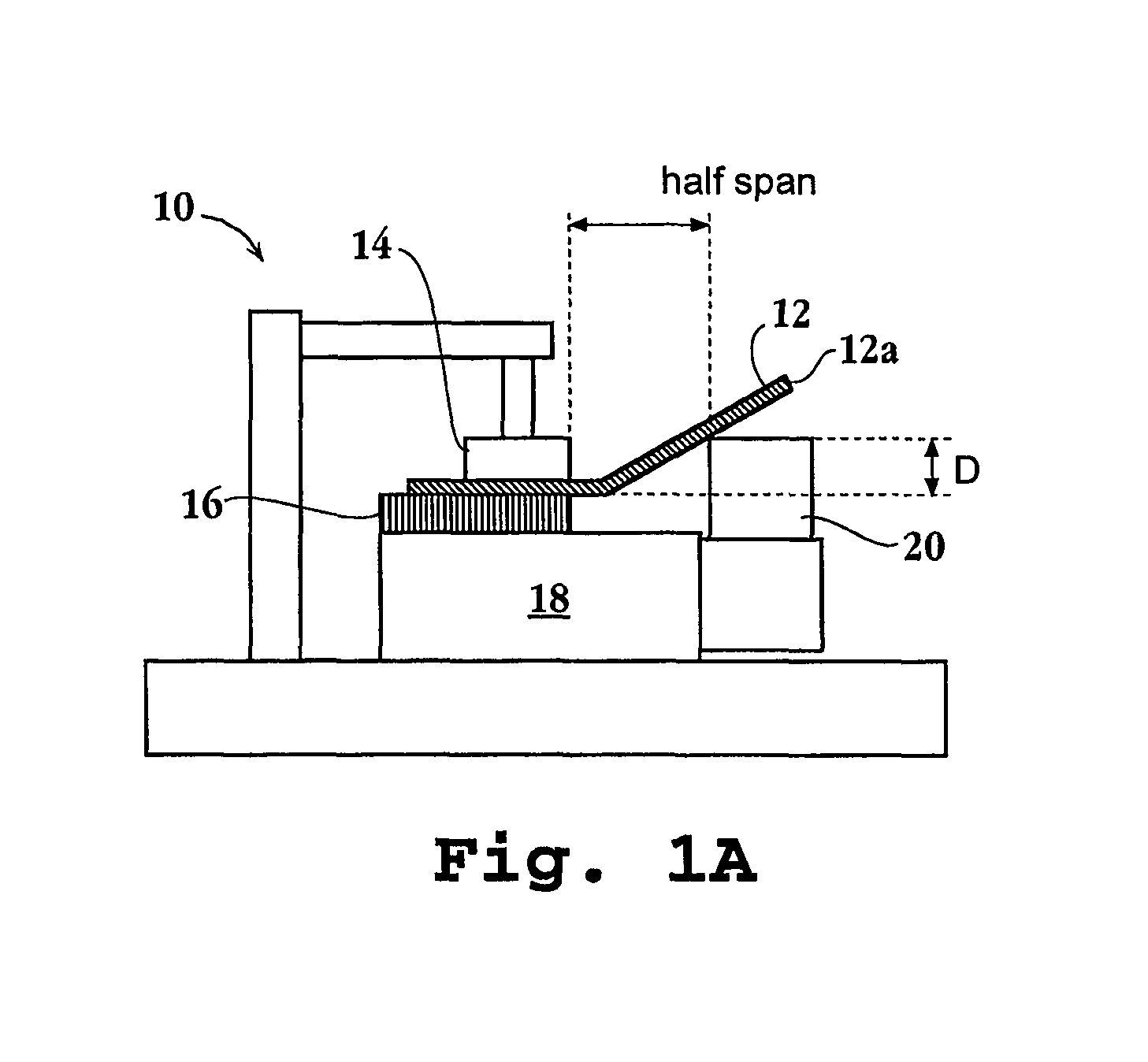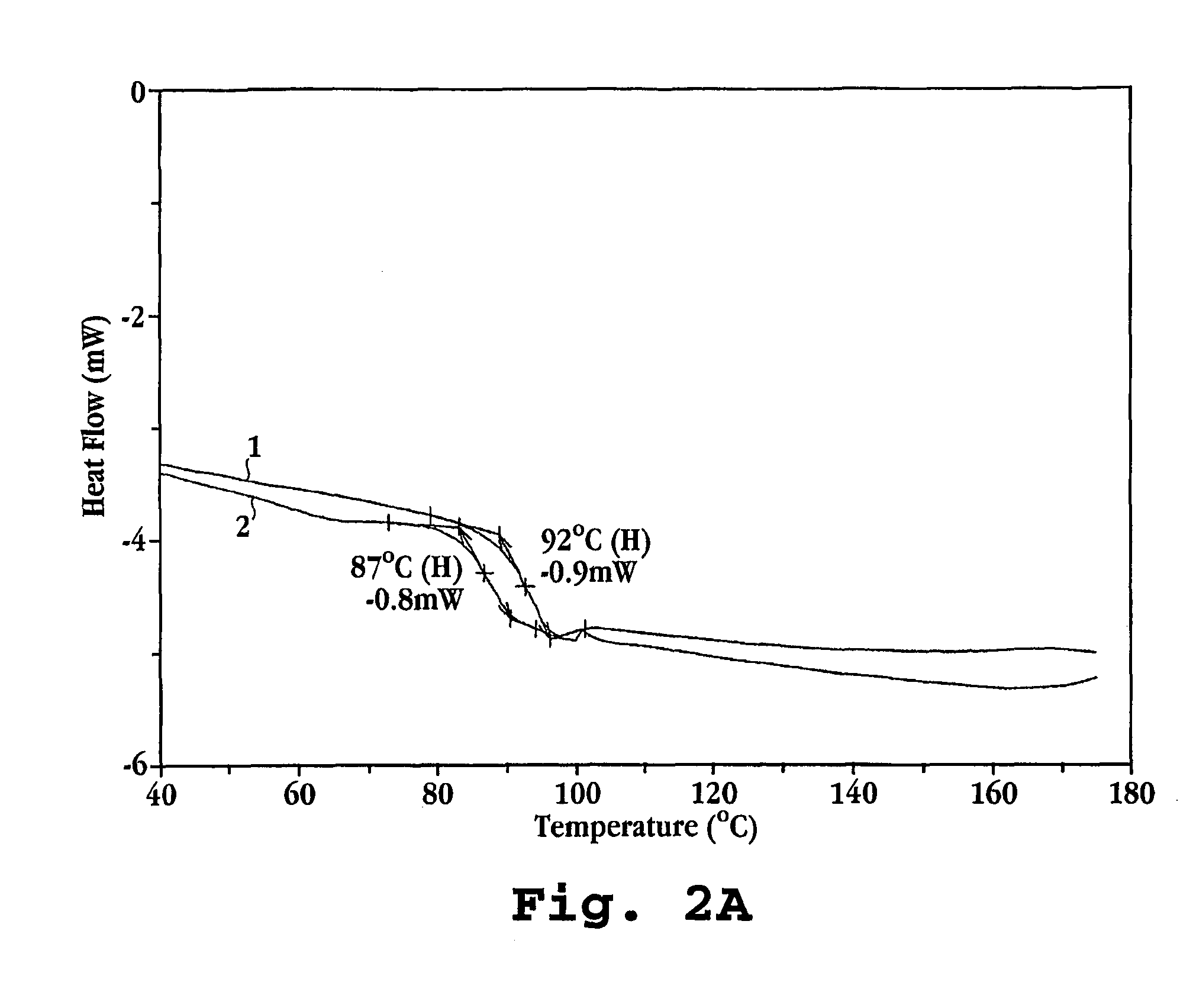Method of reducing stress relaxation in polymer articles and articles formed thereby
a polymer article and stress relaxation technology, applied in the field of reducing stress relaxation in polymer articles and articles formed thereby, can solve the problems of reducing the ease of molding, compromising optical properties, and reducing so as to improve the mechanical properties of polymer articles formed, improve the dimensional stability of non-microporous and non-porous polymer articles
- Summary
- Abstract
- Description
- Claims
- Application Information
AI Technical Summary
Benefits of technology
Problems solved by technology
Method used
Image
Examples
example 1
Glass Transition Temperatures of Polyurethane and Polymethylmethacrylate Polymer Articles
[0151]The following thermoplastic polyurethanes were obtained: Isoplast® 2530, Isoplast® 2531, and Isoplast® 302EZ, (Dow Chemical); Estane® X-4995, Estane® X-1138, Estane® X-1172, Estane® X-1173, and Estane® X-1140 (Noveon); and polymethylmethacrylate (PMMA). Test articles were prepared from the polymers as follows:
[0152]1. Extruded: Test articles comprised of the polyurethanes Noveon® X-4995 and Isoplast® 2530 consisted of samples taken from extruded sheets of the polyurethanes. The extruded sheets were placed on a flat surface in an oven at 90° C. for five minutes for flattening. Then, a test sample measuring 1.9″×2.5″×0.030″ was punched with a die.
[0153]2. Pressed pellets: Polymer articles comprised of the polyurethanes Isoplast® 2531 and Isoplast® 302EZ, were prepared from pre-dried pellets, pressed on a hot press at 232° C. (450° F.) into a 30 mil sheet. The sheet was set aside for 24 hours...
example 2
[0164]Rigid polyurethanes (Estane® X4995 and Isoplast® 2530) were extruded into 0.76 mm thick sheets and aged at ambient conditions for 72 hours. Samples of the extruded sheet were subjected to varying thermal processes, as indicated in the table below, and then the stress relaxation properties and creep modulus were measured.
Thermal Treatment Conditions
[0165]
PolyurethaneTemperatureHumidityTimeTest No.Trade Name° C.(%)(hours)1Estane ® X-49952245-50242Isoplast ® 25302245-50243Estane ® X-499560—244Estane ® X-499560100245Isoplast ® 2530115166Estane ® X-4995115167Estane ® X-49958024
[0166]Stress relaxation of the samples was measured according to the method described above, where the stress relaxation tests were conducted at approximately 5% strain at 37° C. and 95% relative humidity. The results are shown in Table B. The data is presented graphically in FIG. 3.
[0167]
TABLE BTime hrsSample 1Sample 2Sample 3Sample 4Sample 5Sample 6Sample 70.000000000.5202024132231171.0252528152837224.03739...
example 3
[0168]A sample of the polyurethane polymer Estane® X-4995, having a dry glass transition temperature of 94° C. (determined by DSC, as described above), was heated 80° C. for 24 hours. A second sample was heated at 80° C. for 24 hours and then cooled to −10° C. for 24 hours. Both samples were then tested for stress relaxation over a 24 hour period and compared to a control sample that had not been heat treated. The results are shown in Table 1.
PUM
| Property | Measurement | Unit |
|---|---|---|
| Temperature | aaaaa | aaaaa |
| Temperature | aaaaa | aaaaa |
| Temperature | aaaaa | aaaaa |
Abstract
Description
Claims
Application Information
 Login to View More
Login to View More - R&D
- Intellectual Property
- Life Sciences
- Materials
- Tech Scout
- Unparalleled Data Quality
- Higher Quality Content
- 60% Fewer Hallucinations
Browse by: Latest US Patents, China's latest patents, Technical Efficacy Thesaurus, Application Domain, Technology Topic, Popular Technical Reports.
© 2025 PatSnap. All rights reserved.Legal|Privacy policy|Modern Slavery Act Transparency Statement|Sitemap|About US| Contact US: help@patsnap.com



